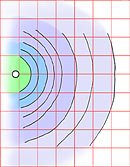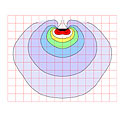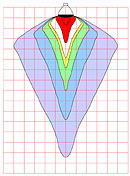|
Between August 2004 and July 2005, we tested a total
of 88 lamps of all types and brands available to reptile
keepers in the UK; we launched this website in July
2005. Since then, we have continued long-term monitoring
of a range of the original lamps and we continue to
test new products. Reports of these tests will be published
on this website as they are written.
In
our study we have looked at the entire UVB output (between
280 and 320nm of the electromagnetic spectrum) of all
types of lamp. We have investigated in detail the initial
output of a new lamp; the decay in the output of a lamp
with time; and the characteristics of the UVB “beam”
for each type of lamp – how far the UVB light extends
from the lamp and in what directions.
We
have also looked at the effects of reflectors, and of
screens and mesh, on the output of these lamps.
We
are not scientists, and our tests were not carried out
in laboratories. All of our readings were either made
on lamps actually in use in “real” vivaria – our own,
those of our friends, and fellow hobbyists – or on lamps
placed in simple test rigs in our own homes. Variations
in the room temperature, fluctuations in the household
electricity supply, even the amount of dust on an older
lamp in someone’s vivarium will affect the results to
some extent.
Vivaria
come in all shapes and sizes with walls reflecting different
amounts of light. It is simply very difficult to line
up a meter perfectly with a steel tape measure, the
tip of which is just touching a lamp three feet above
you, and take a reading whilst a curious green iguana
is trying to jump onto your shoulder. Nevertheless,
we have been surprised by the consistency and repeatability
of the readings obtained with the Solarmeter 6.2.
What
we cannot measure…
Our
results cannot be used to compare brands, and determine
which lamps are the best at stimulating vitamin D3 production.
For that, the exact proportion of ultraviolet light
in the wavelengths 290 - 315nm produced by each lamp
must be known. To obtain that information, detailed
spectroradiograms of lamps of each brand must be obtained
using powerful laboratory instruments, and compared
with the ability of the lamps to produce vitamin D3
using in vitro biochemical tests in the laboratory.
Researchers
including Jukka Lindgren in Finland and William Gehrmann
in the USA are conducting pioneering work on this right
now. We await their results eagerly, and will report
on their findings as soon as they are available. Last
year, Lindgren published the first work in this field,
which can be read online at: http://www.testudo.cc.
Lindgren
developed the concept of a “D3
Yield Index” – a comparison between the vitamin
D-producing ability of a lamp with that of the sun.
Among the lamps he tested, were several fluorescent
lamps currently on sale in the UK: the Exo Terra Repti
Glo 2.0, 5.0 and 8.0, and the Zoo Med Reptisun 5.0.
He found the Reptisun 5.0 to have the highest D3 Yield
Index of all the strip lamps he tested, owing to a high
output in the 290 - 315nm range. However, the Repti
Glo 8.0 and 5.0 also performed well compared with other
lamps in the test.
There
is yet another reason why it is not possible for us
to compare different brands of lamp directly with one
another. Different makes of lamp have different spectral
power distributions - that is, they emit different
amounts of UVB at each wavelength. Hand held “broad
spectrum” UVB meters such as ours have a fixed peak
sensitivity; ours is between 290 -300nm. If two lamps,
in theory, put out equal amounts of UVB, but one lamp
emitted most of this at 295nm, the other at, say, 315nm,
the readings on a Solarmeter 6.2 would be somewhat higher
for the first tube than for the second.
…And
what we can!
While it is important to know which lamps enable production
of the most vitamin D3, it is also important to know
how different lamps actually supply UVB to our reptiles
in the vivarium, and it is this which we have
been able to study.
Different
lamps vary enormously in the amount
of UV light they emit, and in the type
of beam they produce. If two lamps produce, for
example, 20uW/cm² of UVB at 12” distance, but one lamp
has a beam that is twice as wide as another, then a
large reptile sitting 12” away, which cannot sit completely
inside the beam, will be able to produce more D3 from
the lamp with the wider beam.
It’s
also very useful to know how much the output of a lamp
decays with time. Good
UVB lamps are expensive, because of the quality glass,
phosphors, arc tubes and so forth that go into their
production, and because many mercury vapour lamps are
actually hand made. One of the first questions we all
ask, when buying something expensive, is “How long will
it last?” We
also wonder, quite naturally, whether it is necessary
to follow the manufacturer’s recommendations regarding
replacement of tubes every six, eight, or twelve months?
Our
study examines the characteristics of each type of lamp
in turn, so that the advantages and disadvantages of
each type may be considered by anyone wondering what
to choose for a particular set-up or species of reptile.
Collecting
the Data.
Details
of the simple measurement
techniques we used.
|

























